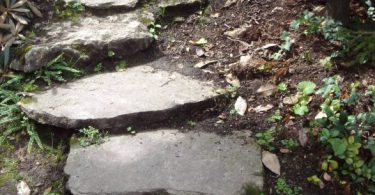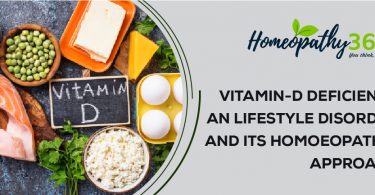
ABSTRACT
Iscador therapy potentiates the action of homoeopathic therapeutics, by acting on the immune mechanism. When understood and practiced these therapies, they become limitless in their possibilities for development and their power to treat the millions of sick people of cancer in the world. Cancer has become one of the most feared ailments and there has been an alarming increase in the incidence of cancer since the last century. This rise in incidence has been explained not only due to sophisticated detection techniques, but also due to an increase in the environmental carcinogens affecting the cell adversely, stimulating it to unlimited growth and multiplication – cancer. Conventional medical treatments are aimed at killing the cancer cells, but this is not effective enough. Iscador therapy is a type of treatment for cancer used by doctors trained in anthroposophic medicine and all prepared from different types of mistletoe extracts. Treatment with Iscador aims at intensifying the body’s own forces against the cancer cell’s tendency towards autonomy, it is a complementary rather than an alternative medicine and much effective in the management of cancer along with Homoeopathic medicines.
KEYWORDS
Iscador therapy and homoeopathy.
INTRODUCTION
Iscador therapy is a type of therapy treatment for cancer used by doctors of anthroposophic medicine and cancer is a term for diseases in which abnormal cells divide without control and can invade nearby tissues. Cancer cells can also spread to other parts of the body through the blood and lymphatic system.(1) Iscador therapy have specific effects on cancer cells & and stimulate the immune system. It is frequently prescribed in Europe by medical doctors including oncologists in addition to the conventional cancer therapies, radiation, surgery and chemotherapy. Iscador therapy was developed in Switzerland by Rudolf Steiner at the beginning of the 20th century. Rudolf Steiner was Austrian-born and he developed the science of anthroposophy. The word Anthroposophy means ‘wisdom of the human being’. It takes into account spiritual dimensions of the human being and the world. Steiner introduced the concepts of anthroposophy into all aspects of life — education, medicine, pharmacy, agriculture, economics, art and religion. This was how Anthroposophic medicine was born. (2) Homoeopathic system of medicine and Alternative systems of medicine take a more holistic approach. With this approach, one realises that the cancer cells themselves are not the villains. They are just the manifestation of something going wrong within the defense mechanisms of the body. (3) It is now known that tumour development is preceded by a pre-tumour phase, that may persist for years if not decades. There is a gradual failure of the immune system, with the system becoming unable to distinguish between self and non-self. A healthy organism with a fully functional immune system identifies malfunctioning cells as alien and destroys them. Plenty of such cells arise from time to time in every individual. Failure of the monitoring system may result in de-differentiation of cells in certain organs, which are then no longer under central control. These cells begin to program their own ‘circuit diagram’ and it is then possible that they may proliferate without any control. The code of those deviant cells no longer connects with the ‘human being’ program. This is the view now taken by modern molecular biologists and it confirms the statements made many years ago by Rudolf Steiner*, the founder of anthroposophy. Anthroposophic medicine is based on the spiritual-scientific view of a healthy human being who is in close harmony and interaction with the different levels of creation, and has lost this when in a state of ill health. (2) This involves a holistic approach and hence is compatible to other holistic systems of medicine. Training in anthroposophic medicine is available only to doctors already trained in conventional or alternative systems of medicine. The substances from which anthroposophical medicines are prepared are essentially natural and taken from the mineral, plant and animal kingdoms and medicines are prepared according to homoeopathic principles hence anthroposophic medicine and homoeopathy easily go hand in hand.
Iscador is the trade name of a group of anti-cancer treatments, all prepared from different types of mistletoe extracts. (4) Treatment with Iscador aims at intensifying the body’s own forces against the cancer cell’s tendency towards autonomy. Iscador is a complementary rather than an alternative medicine.(1) It is frequently prescribed in Europe by medical doctors including oncologists in addition to the conventional cancer therapies, radiation, surgery and chemotherapy. Nowadays in Europe, mistletoe is a key component in conventional cancer therapy.
In Arlesheim, Switzerland, there is a specialised clinic, the Lukas Klinik, available for the treatment and after-treatment of tumour patients. In this clinic, apart from the medical therapy with Iscador, treatment of the whole person is also carried out for cancer patients and for at-risk persons. Art therapy, sculpture therapy and Eurythmy are all part of the process of holistic healing. Today there are doctors in many countries who treat their patients with Iscador. In India, following training in anthroposophic medicine, homoeopaths have begun to use Iscador for cancer cases. (5) Iscador is available in the US under the brand name ‘Iscar’. It is manufactured mainly in Switzerland and Germany and is then exported. There are about 1400 mistletoe species around the world. One thing that they all have in common is that they do not root in the mineral soil but live on other, generally woody, plants. Only white-berried mistletoe (Viscum album) is used to treat cancer.
Mistletoe (Iscador) contains among other things, two groups of toxins: viscotoxins and mistletoe lectins. Viscotoxins and mistletoe lectins are proteins capable of being broken down in the digestive tract. The molecular structure and pharmacological actions of viscotoxins are closely related to those of snake venoms. (4) They have cytolytic action, i.e. they dissolve cancer cells. The mistletoe lectins are related to castor-oil plant lectins. They have cytostatic properties, i.e., they inhibit the growth of cancer cells.
THERAPEUTIC APPLICATIONS (5)
- Early malignancies. Here it has the greatest scope, especially in stage 0, i.e. Carcinoma-in-situ.
- Advanced malignancies. Here, it is of considerable help in inoperable tumours, recurrences, widespread metastases and in terminal cases, it brings about palliation.
- It is used as a prophylactic for malignant lesions in pre-cancerous states, where regression of the lesion takes place.
- Benign neoplasms.
- Surgery – Inoperable tumours become operable through delineation of the tumour by Iscador therapy. During the operation, it helps prevent dissemination of the tumour. Post-operatively, it hastens a smooth convalescence. Early follow-up treatment by Iscador results in a significant reduction in the incidence of recurrences and late metastases by about 30-40 %.
- Concurrent with chemotherapy and/or radiation, Iscador prevents or reduces toxic side effects, promotes tolerance as well as dispersion of the tumour.
- Cancer patients treated with Iscador and followed up for a long time with regular laboratory investigations show no toxic symptoms, apart from the desirable rise in body temperature, transient rise in leucocytes and rise in lymphocytes. No harmful side effects have been reported. Even if Iscador is given intensively for many years, there is no depression of the bone marrow, unlike with chemotherapy and radiation.
- Iscador therapy stimulates the form-giving processes and forces in the human organism against the tendency to unregulated proliferation of the cell, which is seen in cancer.
REACTIONS UNDER ISCADOR THERAPY (6)
Iscador preparations are classified according to the host-tree of the mistletoe used in their preparation. Depending on the localization of the primary tumour and on the sex of the patient, the type of Iscador preparation is selected. Metastases are treated with the same preparations as the primary tumour. Special metal combinations are used to increase and potentiate the action of Iscador on specific organs. Each preparation is available in a number of strengths. The different strengths permit variation in the intensity of the treatment, depending upon the clinical state of the patient. The route of administration is usually subcutaneous; only in the case of intracranial tumours is the oral route usually used. The time of administration is usually in the morning, which is the time of the physiological rise of temperature. The frequency of administration varies according to the type and location of the tumour and the judgement of the physician. The duration of the treatment is quite long, extending over a number of years. The changes in the type of Iscador preparations, dose, frequency, etc., are managed through the assessment of the clinical response and the laboratory data.
- Inflammatory reaction with increased flow of blood and swelling in the region of the tumour is seen occasionally with usual subcutaneous injections. This passes off in a few hours.
- Slight increase in body temperature occurs which is desirable as a curative process.
- Transient increase in the neutrophil component of white blood cell count, which persists for some hours.
- Immune stimulation as a whole and consequent inhibition of tumour development which leads to :
1) improvement in the general condition.
2) increased appetite.
3) improved sleep.
4) gain in weight.
5) decrease in fatigue and depression.
6) stimulation of urinary and bowel functions.
7) reduction or disappearance of pain.
- Relief of pain and subjective improvement in the patient are most striking even in advanced stages of cancer and in spite of the progressive course of the tumour.
- Very rarely, allergic reactions or anaphylaxis are seen after administration of Iscador. In such situations, desensitization needs to be carried out before Iscador can be resumed again.
COURSE OF TUMOUR UNDER ISCADOR THERAPY (5)
- Stationary for some time
- Occasional regression of the tumour
- Slowing down or cessation of tumour growth
- Reduced incidence of metastases or secondaries, or prevention of extension
- Reduced incidence or recurrences after operation and/or radiation
CONCLUSION
Iscador medicines and homoeopathic therapeutics, both act on the immune mechanism. Since the use of Iscador is rather expensive by Indian standards, Iscador medications are imported into India and are fairly expensive, though much cheaper than the costs of conventional cancer treatments. It should be remembered that Iscador needs to be continued for several years, with gaps in between as suggested by the treating physicianthe patients should be offered their choice of treatment: either Homoeopathy along with Iscador, or just homoeopathic medicines. But yes it is much effective in the management of cancer with homoeopathic medicines, except some cases where patient is either highly sensitive or idiosyncratic so but never self-medicate using homoeopathic and iscador therapy, cancer is a complex condition and should be assessed completely before initiating the treatment.
REFERENCES
- Bühler W. Leroi R. Cancer as a Disease of Our Times. Translation by Dr. R. Goldberg, M.D., 1979.
- Introduction to Anthropoionsophical Medicine – Robert Gorter, MD.
- Hahnemann S. Organon of medicine. Translated by William Boericke. B. Jain Publishers Pvt. Ltd., New Delhi, Reprint Edition 2002.
- Gorter RW, MD. Iscador – Mistletoe preparations used in anthroposophically extended cancer treatment
- Directions to the use of Iscador in the treatment of Cancer – HISCIA and Lukas Klinik publication.
- Leroi R, MD. The Mistletoe Preparation Iscador in Clinical Use.
- Healing with Homoeopathie. Available at www.homoeopathie.in
About Author:
Dr Rakhi – Assistant Professor, Department of Physiology including Biochemistry, Homoeopathic Medical College and Hospital Chandigarh, Punjab University, India.





